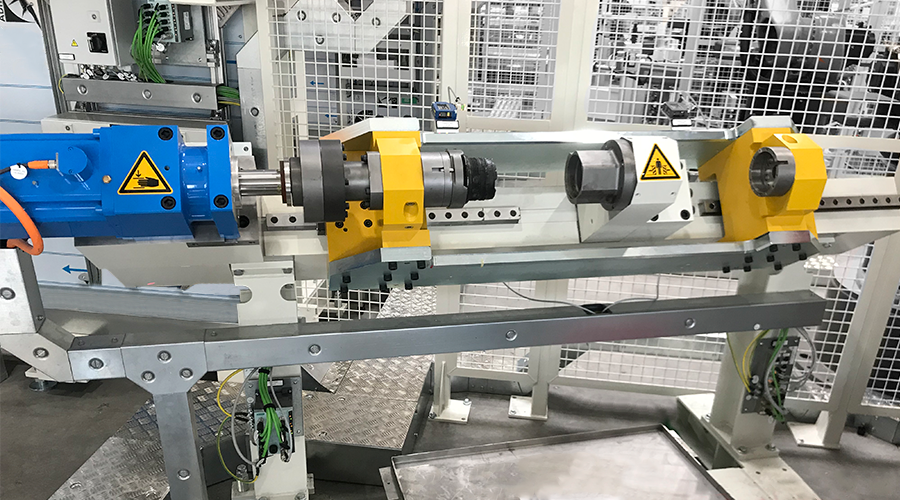Joining processes
Füge-prozesse
Successful industrial production is largely dependent on reliable joining processes.
Joining as a key
process
The press-fit connection is still one of the most common methods for joining components. We have dealt with it intensively and developed and optimized the equipment. Whether joining on block or on measure, forces from 1KN to 700 KN we know the spectrum in the field of automated assembly.
Electromechanical joining technology built on stable C-frames or frame constructions fulfill these tasks.
Our know-how about the product parameters is also decisive. At what speed can the various materials, dry or oiled, be joined?
In case of doubt, the mating is tested and the process is examined in our test laboratory using a standard joining station.
The appropriate equipment can thus be selected in the best possible way. The associated force-displacement evaluation provides the basis for the quality assessment of the joining process.
Basic equipment joining tongs
Stability, rigidity and precision are the distinctive features of our C – joining tongs.
The joining forces are introduced via electromechanical joining units from our renowned partners.
Special pre-centering units and precise component fixtures ensure the alignment of the parts to be assembled.
Grundausstattung Verbindungszangen
Stabilität, Steifigkeit und Präzision sind die Merkmale unserer C-Verbindungszangen.
Die Einbringung der Fügekräfte erfolgt über elektromechanische Fügeeinheiten unserer renommierten Partner.
Spezielle Vorzentriereinheiten und präzise Bauteilvorrichtungen gewährleisten die Ausrichtung der zu montierenden Teile.

Equipment
Component wetting
It depends on the material pairing whether the joining process runs as intended by the developer.
In some applications, the sliding properties must be improved with suitable wetting agents. For this purpose, we have developed, optimized and widely used various processes suitable for the application.
We mainly use the following methods: Spray wetting, brush wetting, roll-off wetting
Component wetting
The material pairing determines whether the joining process runs as intended by the developer.
In some applications, the sliding properties must be improved with suitable wetting agents. For this purpose, we have developed, optimized and widely used various processes suitable for the application.
We mainly use the following methods: spray moistening, brush moistening, roll-off moistening.
Compression
The interference is the measure when it comes to the squeezing out force and thus also the joining force.
Elastomeric bearings are often developed with considerable oversize and sometimes also in slotted form in order to achieve high press-out forces with a small installation space and low weight.
The compression units we have designed and continuously improved enable these components to be processed.
Component supply
We have developed many variants for component feeding. Whether from bulk or sorted in component-specific transport containers, we bring the parts to your place.
In most cases, position orientation is also important. Optical systems help here and detect the appropriate type at the same time.
Component supply
We have developed many variants for component feeding. Whether from bulk or sorted in component-specific transport containers, we bring the parts to your place.
In most cases, position orientation is also important. Optical systems help here and detect the appropriate type at the same time.







